Mastering Venn Diagrams: Engaging Strategies for Kids
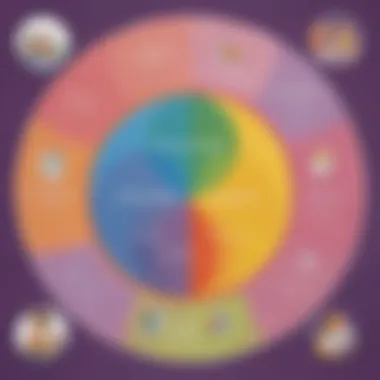
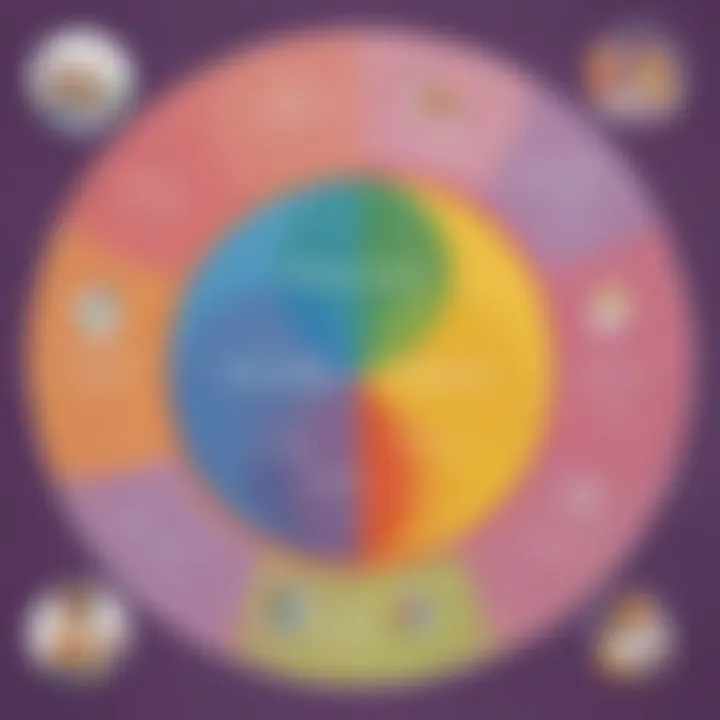
Intro
Understanding Venn diagrams can significantly aid in children's logical thinking and problem-solving abilities. This introduction to Venn diagrams offers a pathway from basic concepts to hands-on engagements. Equipped with this knowledge, children can tackle various real-world problems by organizing information logically.
Venn diagrams serve as a practical tool that helps in visualizing relationships between different groups. These diagrams provide an organized way to interpret and compare elements within disparate sets. The emphasis on grasping Venn diagrams at an elementary level proves crucial in developing analytical thinking for successive concepts in math and reasoning.
As we navigate through the article, our focus will be on fostering learning using creative methods and engaging activities tailored to young learners. Embedded within this content will be prompts for exploration and application in varying contexts. Building a solid foundation through structured learning, even at elementary levels, can yield substantial benefits in one's educational journey.
Creative Activities
Engagement through creative activities is essential for reinforcing the understanding of Venn diagrams among elementary learners. Children actively participating in the creation of Venn diagrams will better retain the theories behind them. This section articulates a few insightful methods to engage children effectively.
Craft Ideas
Crafting becomes a visual and interactive experience. By making physical representations of Venn diagrams, children grasp complex ideas while enjoying themselves. Simple materials such as colored paper, scissors, and markers suffice for constructing a basic Venn diagram.
- Colored Paper: Different colors for each set help distinguish the overlaps visually.
- Markers: Allow children to label sections. Engage them in thinking about what elements belong to each set.
- Stickers or Cut-Outs: Represent objects or animals that pupils can identify easily.
Step-by-Step Guides
- Preparation: Gather materials: colored paper, scissors, tapestry glue, and markers.
- Drawing The Circles: Start by drawing two overlapping circles on a large sheet of paper. Use different colors for visual contrast.
- Labeling: Label each circle with a distinct set (for example, “Pets” for one and “Animals” for another).
- Adding Items: Children can cut out animals from magazines representing categories and place them in appropriate sections.
- Discussion: Prompt discussions regarding where certain items belong and why.
Educational Value
These activities go beyond mere crafting. They promote hands-on learning and critical thinking. Each element discussed emphasizes logical classification and reinforces familiar categories. By visualizing the information and manipulating these figures, pupils grasp foundational concepts effectively.
Connecting these practical examples and actions with contemporary educational frameworks ensures learners can utilize skills like sorting and classifying day-to-day. Such reality-driven learning contexts deepen children's comprehension and applicability of relationship mapping fundamentally rooted in mathematical principles.
Fun Quizzes
Quizzes introduce refreshing engagement while reinforcing learning outcomes. They encourage students to test their understanding of Venn diagrams and challenge their reasoning skills in an interactive manner. Designing quizzes around learned Venn diagram concepts creates additional learning benefits.
Quiz Topics
The quizzes encompass various topics related to Venn diagrams such as:
- Identifying colors associated with sets
- Recognizing overlapping elements
- Correctly determining unique characteristics of subjects
Question Types
The assortment of question types can include:
- Multiple choice questions for quick assessments of memory.
- True or false statements to address understanding intricacies.
- Scenario-based questions requiring thoughtful analysis of given information.
This helps maintain interest and motivates children to revisit key concepts frequently, ensuring continuity.
Knowledge Reinforcement
Leveraging quizzes as part of your teaching tactics facilitates healthy competition while simultaneously reinforcing knowledge. Awaiting evaluations fosters retention of learned material. Students become equipped with practical tools to retain understandings through diverse iterations of questions from quizzes.
Fact-Based Articles
Supplementing learning with fact-based reading aids comprehension. Relevant articles help students draw connections between real life and logical organization through Venn diagrams. A wide array of topics can maintain engagement and interests high while deliver concise information.
Topics
Articles can cover diverse areas:
- Everyday objects and their classifications.
- Animals categorized by habitat.
- Environmental educations focusing on ecosystems relationships
Engaging Content
Content delivery should remain engaging yet straightforward. Infographics make complex information digestible and spark interests, ensuring an accessible educational experience. Using simple language balances transparency and engages their young inquisitive minds easily.
Fun fact: Engaging articles enhance memory and assistance stays stronger as children explore content constructed thoughtfully.
Preamble to Venn Diagrams
Venn diagrams are visual tools that help us understand how different groups of things relate to each other. Their layout, with overlapping circles, shows how to identify commonalities and differences between sets. These diagrams are especially useful in forming logical connections, which is vital for children's development of analytical skills.
When introducing Venn diagrams, it is essential to clarify their definition and purpose. Knowing what a Venn diagram is sets a strong foundation. Also, an exploration into their history can enlighten learners on the evolution of this concept, further engaging their curiosity.
Definition and Purpose
A Venn diagram consists of circles that illustrate the relationships between different sets. Each circle represents a set, and when circles overlap, they display the intersection, revealing shared elements. These diagrams help students visualize problems and simplify complex information, making it easier for younger learners to grasp abstract notions.
Additionally, Venn diagrams promote critical thinking. They require students to analyze relationships, enabling them to articulate their reasoning process clearly. By employing Venn diagrams in problem-solving, kids learn to categorize information effectively. This helps in tasks beyond mathematics, such as categorizing information in language arts or science projects.
History and Development
The origins of Venn diagrams trace back to the late 19th century, credited primarily to British mathematician John Venn. Venn aimed to clarify how different mathematical sets could be visually represented. During that period, significant shifts in mathematics were occurring, and tools like these diagrammatic representations fostered better understanding. Over the years, the use of Venn diagrams has expanded beyond pure mathematics into various disciplines, increasingly seen in educational settings.
The power of Venn diagrams lies in their simplicity and versatility, making them exceptional educational resources.
This expansion highlights the importance of Venn diagrams in various fields, such as logic, statistics, and even philosophy. Recognizing the historical context aids learners in appreciating the applicability of Venn diagrams today.
Components of a Venn Diagram
A Venn diagram serves as an essential educational tool to aid children's understanding of set relationships. Understanding its components is crucial. The primary elements include circles, intersections, and the universal set. Each part plays a vital role in illustrating concepts of logic and relationships, aiding analytical thinking.
Circles and Their Significance
Circles in a Venn diagram represent distinct sets. Each circle encompasses elements sharing a common attribute or property. For instance, consider the circles labeled 'Cats' and 'Dogs'. Information contained within these circles not only identifies specific properties but also distinguishes unique characteristics of the sets they represent. Visual representation helps children grasp set distinctions succinctly. When children visualize information through circles, they can more easily comprehend equivalences or differences, important for early mathematical development.
Intersection of Sets
The intersection of sets is another core concept illustrated in Venn diagrams. This intersection occurs in the area where circles overlap. It showcases elements that belong to more than one set simultaneously. Using the previous example, if the circles 'Cats' and 'Pets' overlap, the intersection might include 'Persian cat', easily signaling to young learners the notion of shared characteristics. Understanding intersections allows children to think critically about how certain elements relate to one another and enhances coherence in reasoning. In problem-solving scenarios, recognizing how sets interact can clarify solutions to questions.
Universal Set
The universal set encompasses all elements relevant to a particular discussion, often represented by a rectangle surrounding the circles. For instance, in discussions about animals, the universal set might include various types of animals including cats, dogs, birds, and reptiles. This element gives context by providing a complete picture and framework within which specific sets are analyzed and compared. Teaching children about the universal set encourages them to think comprehensively, reinforcing an essential skill: the ability to see the larger picture when solving problems.
Understanding the components of a Venn diagram is foundational in developing mathematical reasoning and logical abilities in children. These insights contribute to differentiated problem-solving and foster a deeper engagement with mathematical concepts.
Types of Venn Diagrams
Understanding the types of Venn diagrams is crucial in this article due to their varied applications in teaching elementary students. Each type serves distinct purposes and can simplify problems in unique ways. Knowing these types enables educators to choose the most suitable diagram for the problems at hand, making the learning process more enjoyable and interactive for young children.


Two-Circle Diagrams
Two-circle Venn diagrams are one of the simplest forms of these diagrams. They allow comparison between two sets. This simplicity makes them ideal for younger students, who may be just starting to understand the basics of sets and relationships.
Students utilize two-angle diagrams to visually demonstrate how many items are shared between two groups versus items that are unique to each. For example, if one circle represents pets and the other represents dogs, the overlapping section should contain items that belong to both categories, while unique sections will display only cats, for instance.
It can also highlight concepts of intersection and difference clearly. This clear distinction aids the young learner in grasping basic set theory faster. The use of colors can help to ease understanding even more, allowing children to relate different areas of the diagram with different groups of objects.
Three-Circle Diagrams
Three-circle Venn diagrams introduce a new layer of complexity. They are beneficial when comparing three sets. Schools often use this model to engage students in more intricate exercises that require deeper inference skills. When dealing with three circles, the possibilities expand. Children can see how each group entertains its own members and how they intersect with one another.
To explain this better, consider three set groups: fruits, red items, and round items. A cement of all three circles may show red fruits like cherries. It can pose problems where students need to identify unique and common properties - thus fostering richer problem-solving skills. Navigating through three variables pushes students towards stronger logical reasoning and enhances their analytical capabilities.
More Complex Diagrams
More complex Venn diagrams blend multiple circles and relationships, which can involve four circles or more. These diagrams frequently are more intricate and can illustrate relationships at a higher level. They can outline relationships among several groups and succinctly showcase extended interactions through multiple intersections.
Using more complex diagrams will not generally be the first technique employed at the elementary level. Nevertheless, introducing these can peak the interest of bright learners seeking more challenging problems. Care must be taken to gradually lead students into this complexity so as not to confuse them.
Advanced skills nurtured through these models can be beneficial for various disciplines. Students learn not only about set relationships but also about organizing information and drawing conclusions based on overlapping data sets.
Whether discussing simple two-circle diagrams or more intricate frameworks, Venn diagrams are a doorway to mastering analytical and logical skills, essential for academic progress.
By delving into these variance types, students grasp not only the information but also the concepts instrumental to perceiving the core of logical relationships. Proper teaching of types can provide firm foundations necessary for future academic challenges.
Basic Concepts of Set Theory
Understanding set theory serves as a fundamental foundation for grasping Venn diagrams. In this context, sets are group of elements that share common properties. By examining these basic concepts, elementary learners can develop not only their problem-solving skills but also their overall logical reasoning.
Understanding Sets
Sets are collections. For example, we might have a set of colors: red, blue, and green. This specific grouping illustrates what a set represents—the features or characteristics that bind the elements together. When introducing this to young learners, it's effective to engage them by using familiar examples, like the items they like or the animals they know.
Differentiating between different types of sets is important. There arefinite sets, which contain a specific number of elements, and infinite sets, which go on forever. The former could be a set of all the fruits in a basket, while the latter might include all numbers, which keeps on counting endlessly.
In learning about sets, students start basic classifications and organization skills. Consider the benefits:
- Critical Thinking: Children analyze how to categorize different items based on their shared properties.
- Problem-Solving Abilities: Learning about sets aids in reconstructing logical thought processes, pivotal in Venn diagram applications.
Relations between Sets
Understanding the relationships between sets expands young learners' cognitive horizons. This involves concepts such as subsets, unions, and intersections. Each of these aspects introduces foundational critical thinking skills that will assist in more complex workings, such as interpreting Venn diagrams later on.
Subsets
A subset is a set contained within another set. For instance, if you have a set of all pets (dogs, cats, fish), then the set of cats is a subset of the pet's set. Grasping this helps children learn more about categorization.
Unions
The union of two sets encompasses all elements. For instance, if one set comprises dogs, and the other set consists of cats, the union brings together all dogs and cats. This idea prompts kids to think of completeness in their visual and logical interpretations.
Intersections
Intersections represent the connection or overlap between two sets. In practical terms, let’s say you have a set of pets and a set of animals found at a zoo. The intersection would include those animals found at both locations, based on the sets defined. Learning about intersections lays groundwork for how data points overlap, relevant later for studying Venn diagrams.
To summarize, mastering these basic concepts lays the groundwork for more complex analytical capabilities. They provide essential analytical tools and real-world critical thinking skills, crucial for developing a comprehensive understanding of Venn diagrams in elementary education.
Steps to Solve Venn Diagrams
Understanding how to solve Venn diagrams is critical to grasping the concept of set theory. For elementary learners, this process lays the groundwork for logical reasoning and enhances analytical skills. Solving Venn diagrams does not just present numbers or values. It encourages students to think about relationships among different groups. This mindset helps them tackle various problems later in math and everyday situations.
Identifying the Sets
Identifying sets is the first task in solving any Venn diagram. This step involves recognizing the groups that are being compared. For students, this means looking at what each set represents regarding common characteristics. For instance, if you are analyzing fruits and vegetables, clear labels such as fruit set or vegetable set make it easier. The major aim here is practice. The more students practice identifying sets, the better they become at grouping elements by key features.
One tip. Encourage children to write down or color-code sets before representing them in the diagram. Visual aids will help clarify relationships. Understanding sets correctly is foundational, as a wrong representation can lead to errors in the later steps.
Filling the Diagram
Once the sets are identified, how to fill the diagram takes importance. Students must place the elements into the appropriate sections of the Venn diagram. This often involves deciding where to put items that do not belong to either set as well as items that belong to both. Children learn that if an element belongs to two sets, it shares a space in the overlapping area.
This stage can involve simple examples, like filling out which students like apples and which like carrots. Color in areas specific to their liking. By actively taking part, it can help consolidate their knowledge.
Important points to note inside the filling process can include:
- Placing unique elements only in the respective circle.
- Using overlap for shared scenarios.
- Clearly labeling categories for easy understanding.
Interpreting Results
Interpreting the drawn Venn diagram is the final step and probably the most rewarding part of the process. Now, students not only look at what they filled in, but they also make conclusions based on the visual they created. This could lead them to ask questions such as: "How many elements are unique to set A?" or "Which elements are shared?" Skills in identifying overlaps transform into logical conclusions about both sets.
Critical thinking truly surfaces at this point. When learners compare findings, they may relate them to stories or solve problems in real life, enhancing their understanding of concepts they grapple with each day.
The process of solving the Venn diagram cannot be rushed. Taking time to follow steps methodically and reflect ensures mastery.
Encouraging discussions around their results fosters creativity. Open forums in a classroom can challenge children's thoughts further. Each element in solving a Venn diagram builds a clearer picture of mathematical relationships. Elementary students will remember these structured steps as they progress academically.
Common Problems and Solutions
Understanding common problems and solutions related to Venn diagrams is essential for elementary learners. This knowledge arms kids with strategies to overcome typical questions and enhances their logical reasoning. Venn diagrams can seem perplexing at first, but dissecting common challenges reveals patterns and insights. By focusing on these issues, students gain confidence in their problem-solving skills.
Simple Problems
When tackling simple Venn diagram problems, learners often work with two sets. These problems usually involve clearly defined characteristics.
- Example Problem: Given two groups, fruits and vegetables, how many items are in both categories?
- Steps to Approach:
- Identify each group.
- List items belonging uniquely to fruits or vegetables.
- Include items common to both in the overlapping section.
- Count each part to find totals.
These types of problems lay the groundwork for reasoning skills. It also illustrates the power of organizing information visually.
Complex Problems
Complex Venn diagram problems involve more sets, often requiring a deeper analysis. These challenges can dispense mental exercises and logical puzzles.
- Example Problem: In a class, 10 children like apples, 15 like bananas, and 5 like both. If some prefer cherries only, how many children were surveyed?
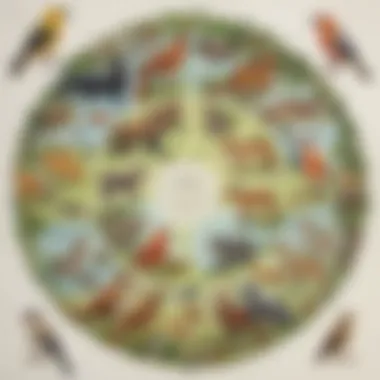
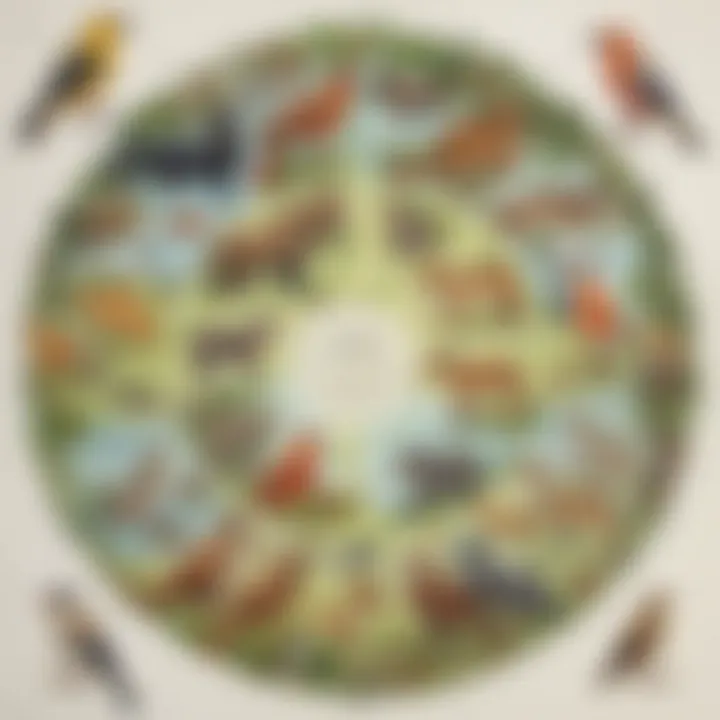
- Steps to Solve:
- Gathre initial data in a table.
- Use overlapping circles to separate liking preferences.
- Calculate totals by adding minors in appropriate parts of the diagram.
Complex problems promote critical thinking and encourage logical evaluation. They can be tricky but present rewarding opportunities for learners.
"Encouraging learners to explore both simple and complex problems with Venn diagrams empowers them in their journey of learning too."
Applications of Venn Diagrams
Venn diagrams serve as versatile tools that foster both understanding and applications across various domains. Particularly for elementary learners, grasping the practical implementations of these diagrams enhances their cognitive skills. These applications remain relevant not just in theoretical exercises but also in nurturing analytical abilities in real situations.
Educational Use
In an educational setting, Venn diagrams are vital for teaching. They aid students in grasping complex concepts through visual representation. By arranging information within overlapping circles, learners visualize relationships between different sets of data. This visual approach helps in dissecting information, promoting clarity—an important factor in effective learning. These diagrams can be utilized in multiple subjects:
- Mathematics: Students employ Venn diagrams to understand set theory and operations on sets.
- Language Arts: They can compare characters, themes, or plot points in stories, facilitating deeper comprehension.
- Science: Venn diagrams permit analysis of similarities and differences between categories of living organisms or chemical elements.
Each circle in a diagram signifies a specific category, making it simpler to spot interesting relationships. Utilizing interactive activities with Venn diagrams in classrooms can further engage students. They can group items or categorize different subjects while visually interpreting the data.
Engaging students through hands-on practice empowers them to become active participants in their education.
Real-World Applications
The significance of Venn diagrams extends beyond the classroom into real-world applications. They convey complex data simplistically, fitting for various contexts. Here are a few notable examples:
- Decision Making: When faced with choices, Venn diagrams can help weigh advantages and disadvantages systematically. Whether to choose a product, a pet, or an activity, a Venn diagram organizes thoughts clearly.
- Software Development: In software engineering, diagram methods help outline requirements or features of different software components. This visual aid enables clearer communication among developers.
- Market Research: In business, Venn diagrams illustrate overlaps in target demographics for marketing campaigns. This identification strengthens marketing strategies by recognizing shared preferences.
Understanding how to apply Venn diagrams butusing logical reasoning in thriving real-world scenarios improves critical thinking in everyday decision-making.
Through both educational methods and practical implementation, Venn diagrams remain instrumental. Нeопein ones awareness of their relevance profoundly encourages learning and the application of logic in various situations.
Tools for Creating Venn Diagrams
Creating effective Venn diagrams involves choosing the right tools. As elementary learners begin to engage with these structures, the tools used can greatly enhance their understanding and facilitate their problem-solving skills. This section will explore both digital and manual methods, discussing their features, relevance, and the advantages they offer. Tools not only assist in visualizing the relationships between sets but also help learners to logically organize data.
Digital Tools
Digital tools provide a more modern approach to creating Venn diagrams. Software and online applications allow for quick modifications and easy sharing of diagrams. Here are some notable advantages:
- User-Friendly Interfaces: Many digital tools have intuitive designs, making them accessible to young learners.
- Customization Options: Students can easily change the color, size, and text in different areas of the diagram.
- Save and Share: Digital diagrams can be saved online or printed for in-class discussions.
- Interactive Features: Some applications offer features that allow students to interact with the diagrams, enhancing exploration.
Popular tools include Lucidchart, Google Drawings, and Microsoft PowerPoint. Each offers templates specifically designed for Venn diagrams. As a result, young learners can drag and drop circles to easily create their desired layout. Exposure to these tools at an early age can enrich their understanding of data representation and analysis.
Manual Methods
While digital tools are beneficial, traditional manual methods remain valuable, especially for elementary learners. Crafting Venn diagrams by hand can aid tactile learners and promote creativity. Consider the following aspects of manual methods:
- Visualization Skills: Creating diagrams manually encourages learners to visualize relationships themselves.
- Creative Expression: Using colored pens or pencils lets students personalize their diagrams, making the process engaging.
- Hands-on Experience: Physical manipulation of objects enhances sensory learning. For example, drawing circles on paper can help solidify concepts in mind.
To create a manual Venn diagram, students typically use paper, markers, or even string. They can draw the circles, label them, and fill in the sections with data. This activity fosters cooperative learning when done in groups, as they can share ideas and strategize with classmates. This method primes their foundational skills and provides immediate feedback on their understanding of sets.
"Choosing the right tool to create Venn diagrams is essential in bridging the gap between abstract concepts and tangible understanding."
Case Studies and Examples
Case studies and examples play a vital role in understanding Venn diagrams. They offer practical scenarios that blend theoretical knowledge with real-world applications. Through these examples, elementary learners can connect abstract concepts with their everyday observations. This not only accommodates diverse learning styles but also enhances memory retention of key ideas.
Engaging with specific problems encourages students to apply their understanding in meaningful contexts. Here are a few important aspects of incorporating case studies and examples into Venn diagram practice:
- Reinforcement of Concepts: Examples clarify how Venn diagrams visually represent relationships between different sets. Case studies illustrate how this tool functions in practical problem solving.
- Engagement with Content: Concrete examples generate excitement among children. This excitement can lead to increased focus during lessons, as they relate the content to their own lives.
- Critical Thinking Development: Attempting to solve various sample problems challenges students to utilize their logic and reasoning. Through systematic thinking, they develop essential analytical skills.
- Error Analysis: Examining incorrect answers or misinterpretations from other’s case studies can help learners identify the common pitfalls, aiding in deeper understanding.
Cases and examples provide students not only insight into the methodology but also show its applicability in wider contexts.
Sample Problems
Sample problems are structured scenarios that present a question involving Venn diagrams. They invite students this straightforward question while allowing them to examine real-life situations.
Example of a simple problem
If a teacher has 20 students that like blue, 15 that like red and 5 that like both. A sample problem can ask: *
Critical Thinking Through Venn Diagrams
Critical thinking forms a central component of effective problem-solving skills. Venn diagrams serve as a visual tool to illustrate relationships among various concepts. They assist elementary learners in organizing thoughts and making connections. This structured approach fosters critical thinking by enabling students to approach problems with an analytical mindset.
Analytical Skills Development
To develop analytical skills in young learners, Venn diagrams provide a straightforward platform. Students learn to identify sets and their unique characteristics. They practice sorting information based on common and distinct traits. As they engage with the diagrams, children categorize data effectively. This skill is essential for interpreting overall relationships between sets.
Young learners benefit from analyzing the pieces of information displayed within the Venn diagram circles. This can enhance their ability to compare and contrast situations, which enables them to make informed decisions in other contexts. For example:
- Recognizing overlapping information helps in group discussions.
- Exploring differences sharpens their decision-making abilities.
Through practice, children become proficient in analyzing complex scenarios using simple Venn diagrams supported inputs. This promotes better organization of data.
Logical Reasoning Enhancement
Logical reasoning is pivotal in nurturing a problem-solving mindset. Venn diagrams provide clear representations of relationships. With visual insights, students engage differently in their thought processes. Unlike traditional methods, they can track different elements effectively.
Using Venn diagrams cultivates understanding of logical inclusivity and exclusivity. As children experience variations in input, they become better at deducing outcomes on their own. The active interpretation of intersections allows them to assess the collective properties without oversights.
Here are some fundamental skills that children acquire:
- Deductive Reasoning: Determining specifics based on general facts.
- Inductive Reasoning: Drawing general conclusions from particular instances.
Overall, engaging in logical reasoning within Venn diagrams reinforces an active pursuit of information rather than passive observation.
Venn diagrams effectively bridge the gap between complex reasoning and accessible logic for young minds. By fostering both analytical skills and logical reasoning, these diagrams play an essential role in child development.
Common Misunderstandings
Understanding Venn diagrams can be triky for elementary learners. It is crucial to address misunderstandings in this area because the right comprehension provides a solid foundation for logical reasoning and critical thinkers. Misunderstanding concepts can lead to incorrect applications later. This jeopardizes children's growth in analytical abilities. Teaching them the right concepts improves their overall learning experience.
Misconceptions about Sets
One of the benefits of using Venn diagrams is how they represent sets and their relationships. However, many learners think sets are mere collections of objects without functions. This notion skewers their understanding. A set represents a group defined by specific qualities or characteristics. Variable arrangement or overlapping characteristics can be confusing. Proper training about what defines a set is paramount.
Important Points about Sets
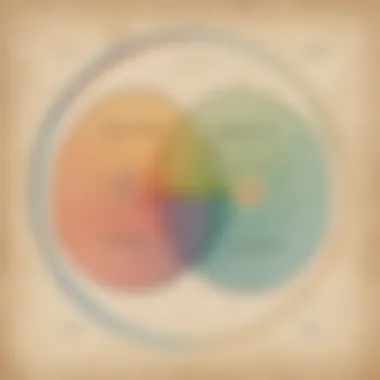
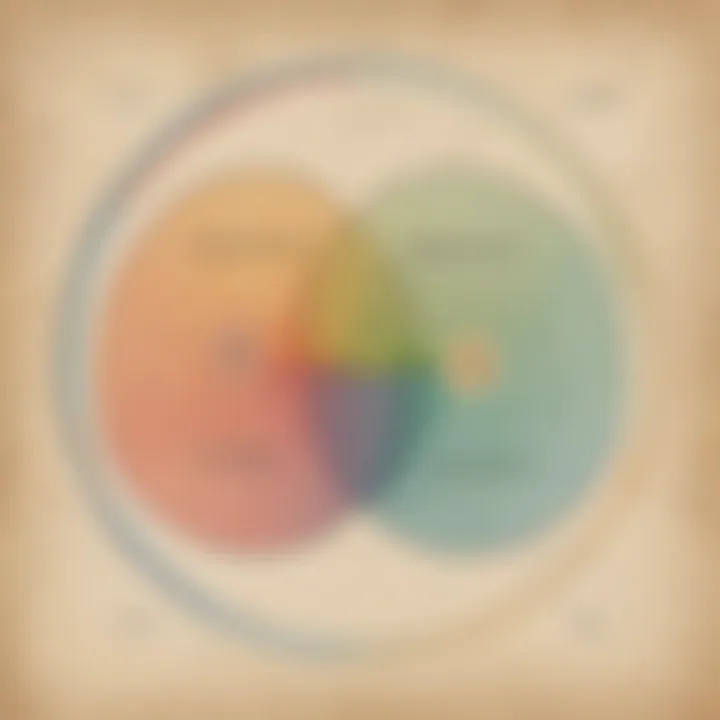
- Sets Can Be Specific or General: A set containing all planets is different when it lists only terrestrial planets.
- Distinctions between Elements: Just because items are in the same set does not mean they share every trait.
- Singleton Sets: Recognizing a set which contains one item could reshape their understanding of how to categorize.
- Empty Sets: Vacant sets still hold significant meaning. This is key in knowing when there's no intersection.
These points dismantle the blurry boundaries many learners hold about sets.
Knowledge about specific elements allows younger students the tools to categorize items correctly in Venn diagrams and evaluates their effective use of these tools in classroom settings.
Errors in Diagram Representation
One significant barrier is mistakes made while filling in Venn diagrams. Students must be diligent in representing partial intersections or failing to correctly place elements within the circles. Errors in diagram representation stem from:
- Overlooking Characteristics: Wrongly assuming common attributes can lead to inaccurately placed elements.
- Misplacing Elements: Misconceptions about overlap may lead students to mix up unique and shared attributes.
Correct Representation Guidelines
- Balance Overlap and Arrangement: Keep distinguishing features clear. This helps guide students in displaying relationships accurately.
- Check and Verify Entries: Regular review assits in confirming that elements are entered properly into diagram sections.
- Model and Discussion: Encouraging group discussion about entries fosters transparency and clarity.
Teach looks and practices effective strategies to mitigate common errors in filling social situations it becomes useful for comprehensive understanding. By helping students with these common challenges, parents can support them to through this learning process.
Advancing comprehension on these facets enhances learner experience. They ultimately foster true confidence in dealing with Venn diagrams.
Teaching Strategies
Teaching strategies play a vital role in effectively imparting knowledge about Venn diagrams to elementary learners. This approach needs careful consideration, focusing on the cognitive abilities and learning styles of young students. Using various methods can better engage students and deepen their understanding of abstract concepts.
Students often grasp ideas more effectively when they interact with the material. Here are some important elements related to teaching strategies for Venn diagrams:
- Active Learning: Involving students in hands-on activities encourages participation. Teachers can create activities where students physically draw Venn diagrams using manipulatives. This method solidifies the concept and engages learners actively.
- Collaborative Learning: Group work can foster teamwork and communication. Small groups can tackle Venn diagram tasks together, allowing them to discuss and reason through problems collectively. Learning in peers’ presence can promote deeper thought processes.
- Scaffolded Instruction: Introduce complex tasks incrementally. Start with simple Venn diagram problems and progressively increase difficulty as confidence builds. This can guide students without overwhelming them.
By using thoughtful teaching strategies, educators can make Venn diagrams accessible and enjoyable for young learners.
Thus, instructors who utilize diverse teaching methods create a richer learning experience that resonates well with elementary school children.
Engagement Techniques
Engagement techniques are crucial since they facilitate student interest and involvement in learning. Keeping their attention can greatly improve understanding of Venn diagrams. Here are some specific techniques:
- Visual Aids: Incorporate colorful and visually appealing materials. Charts or diagrams that use familiar subjects can enhance comprehension.
- Real-World Examples: Draw connections to everyday scenarios where Venn diagrams might apply. For instance, discussing favorite fruits or pets can create relatable contexts that clarify concepts.
- Interactive Games: Utilize fun and educational games that incorporate Venn diagrams within the gameplay. Competition in a game setting can motivate students to collaborate and think critically.
Using these techniques can foster a favorable learning atmosphere that encourages students to engage more actively.
Use of Technology
Technology can serve as a powerful ally in teaching Venn diagrams. Integrating technology into lessons adapts to modern learning environments. Various digital tools and resources can facilitate comprehension:
- Educational Software: Graphics programming such as Geogebra can be helpful. It allows students to play with shapes and visualize intersections easily.
- Interactive Whiteboards: These tools can promote collaborative learning. Students can work collectively on problems, and the capability to write and solve in front of their peers can reinforce learning.
- Online Resources: Websites like Wikipedia or educational platforms offer additional practice examples. They allow students to compare their answers and expand their knowledge beyond classroom instruction.
Integrating technology within lesson plans enhances the overall learning experience and stretches students' understanding of Venn diagrams beyond traditional methods.
Assessment and Evaluation
Assessment and evaluation play a crucial role in guiding the learning process for elementary students using Venn diagrams. These tools not only measure what a child has learned but also provide insights into their understanding and mastery of comparing groups and sets. Proper assessment ensures that students grasp the concepts behind Venn diagrams and enhances their logical and analytical skills, which are fundamental to their cognitive development.
Testing Understanding
Testing understanding involves various strategies to gauge how well students comprehend Venn diagrams and their applications. Multiple choices, fill-in-the-blank questions, or hands-on activities can effectively assess their grasp of content. Here are some methods:
- Quizzes and Worksheets: Simple quizzes with a mix of diagrams for students to interpret help in testing recognition of various forms and elements of Venn diagrams.
- Group Activities: Facilitating group discussions on problem-solving using Venn diagrams can shed light on peer-learning opportunities as students communicate their thoughts.
- Practical Exercises: Engage children with real-world scenarios requiring them to create Venn diagrams to organize the information. This approach urges them to think critically while working collaboratively.
Venn diagrams serve as valuable tools for students to visualize the relationships among different groups. They encourage deeper thinking and better analytical skills.
Effective testing not only measures knowledge but also enhances the overall educational experience. Teachers should offer varied forms of assessments to engage all types of learners.
Providing Feedback
Feedback is essential for student learning. Constructive feedback boosts a child’s confidence and inspires them to explore topics further. When students complete an assessment regarding Venn diagrams, teachers shadow their solutions for clarity and direction. This process involves:
- Specific Praise: Recognizing effort in diagram construction or their minutes for choosing how to group different elements emphasizes positive reinforcement.
- Guidance for Improvement: Pointing out specific areas where misunderstandings occurred disparities few mistakes from standards await. Instruction here ensures clarity on what next steps they should follow.
- Encouragement of Questions and Discussions: Welcoming queries about the feedback promotes an open discussion atmosphere where students can air concerns or confusion.
Result-oriented feedback has profound implications for honing children's skills and embracing new challenges as they tackle higher-problem types. Adjustments here nurture resilience needed for future scenarios complex or simple alike.
Future of Venn Diagrams in Education
The future of Venn diagrams in education holds significant importance, especially for younger students. As educators look for effective ways to teach complex ideas, Venn diagrams have become an essential tool. Schools increasingly incorporate these diagrams to help children visualize relationships among sets. They serve as a bridge to critical thinking and logical reasoning.
Understanding this topic allows educators and parents to appreciate how Venn diagrams encourage interaction with math concepts. Children learn to compare and contrast different elements. This capability is fundamental in developing analytical skills early in life's learning journey. Venn diagrams transition abstract ideas into more manageable visuals.
Emerging Trends
Venn diagrams are experiencing changing uses due to technological advancements. Teachers are beginning to incorporate digital tools to create more engaging activities. Applications like Google Drawings and Canva allow students to participate in constructing their own diagrams using unique methods. This fosters creativity alongside traditional learning.
- Collaborative Learning: Group projects using Venn diagrams are done digitally. Students can work together, merge their knowledge, and see perspectives from peers.
- Adaptive Technology: Software programs adapt to individual learning needs. These help students explore Venn diagrams at their own pace, supporting varied learning abilities.
Additionally, there is a push towards incorporating more real-life scenarios into the use of Venn diagrams. This method helps students understand how mathematical concepts apply outside the classroom. Integrating these practices aids in retaining enthusiasm in subjects often viewed as difficult.
Potential Developments
Yeas from now, Venn diagrams may evolve in their application beyond typical classroom settings. As educational strategies advance, expect to see diagrams integrated into various subjects. From science to social studies, these diagrams will facilitate discussions on systems such as ecosystems or diverse cultures.
- Cross-Disciplinary Applications: It is likely that students will increasingly use Venn diagrams to represent information from different disciplines. This can include exploring themes in literature while referencing historical contexts or scientific theories.
- Gamification in Learning: Future innovations might include learning games that revolve around Venn diagrams. These engaging strategies could help children grasp concepts in a fun manner while still gaining essential skills.
“As education continues developing, leveraging visual tools like Venn diagrams will be essential for teaching complex ideas in a simplified manner.”
Ultimately, the integration of Venn diagrams into modern educational practices shows promise for enhancing concept retention and acquisition in students. The continued focus on improving these educational aids will contribute to the growth of logical reasoning skills among elementary learners.
Culmination
The concept of conclusion forms the cornerstone of any thoughtful examination of Venn diagrams. It emphasizes essential takeaways from the ongoing discourse, particularly in the context of elementary learners engaging with this powerful mathematical tool. Here, we underpin the importance of summarizing complex ideas in a digestible manner for young minds.
Venn diagrams serve as visual learning aids, supporting logical organization and analysis. By successfully mastering this methodology, children gain not only numerical skills but also cultivate their analytical thinking and problem-solving capabilities.
Recap of Key Points
- Visual Representation: Venn diagrams uniquely clarify relationships and overlaps among different sets.
- Problem-Solving Skills: Engaging with these diagrams develops critical reasoning.
- Versatile Applications: Whether in simple school exercises or more complex real-world scenarios, Venn diagrams prove to be relevant.Exceptionally impactful learning experiences managers.
- Fostered Engagement: Through interaction with these diagrams, learners take ownership of their mathematical knowledge, encouraging exploration and discovery.
In essence, the ability to succinctly articulate the points discussed aids in reinforcing a learner's understanding and retention.
Final Thoughts
In summary, while not merely tools of empirical analysis, Venn diagrams evoke creativity and essential thinking in young learners. With clear visual aids, children can taste the powerful blend of math and logical deduction.
It becomes paramount that educators and caregivers realize the long-term benefits of using these diagrams in elementary education. The practices explored in this article aim to effectively intertwine analytical thought and playful exploration together, elevating children's educational journeys into meaningful intellectual milestones. Ultimately, this practical method represents an investment into the minds of future decision-makers, critical thinkers, and problem solvers.
"By simplifying complex relationships within data, Venn diagrams not only enhance academic skills; they also prepare students for real-world challenges."







